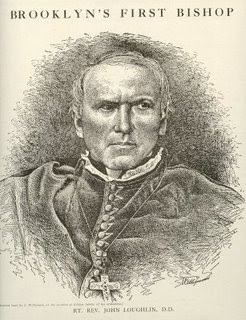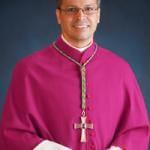December 20 marks the birth of Brooklyn’s first Bishop, John Loughlin (1817-1891). Born in County Down, Ireland, on December 20, he studied for the priesthood in America. In 1840, he was ordained by Bishop John Hughes at Old St. Patrick’s Cathedral on Mott Street. A capable administrator, within a few years he was rector of the cathedral and Vicar General of the New York Archdiocese, which then included most of the state and northern New Jersey. When Long Island was made a separate diocese, Father Loughlin, at age 36, became Brooklyn’s first Bishop. During his 38-year tenure the Catholic population grew from 15,000 to nearly 300,000. Bishop Loughlin oversaw the establishment of an impressive network of churches, schools, colleges, hospitals, and orphanages stretching from Red Hook to the Hamptons. By then, a local paper noted that “a ‘Romish Church’” was “no longer a thing of wonderment,” and “a Romish priest” was “no longer a stranger.” A loner who disliked publicity, he was described as a “one man chancery.” It was said that he had “a strong aversion for two classes of people—Jesuits and reporters.” While he did talk to reporters on occasion, the Jesuits had to wait until after his death to start a Brooklyn foundation.
The Brooklyn Eagle aptly (and fairly) described his legacy: “But with all his odd ideas the bishop has been and is a great man. He was cautious, conservative, and yet vigorous and wise, and whenever or wherever the opportunity had presented itself he has taken the advantage of it to advance the interests of the church, and the monuments to his life work which stand in all portions of the diocese in the form of healthy, active and growing churches, speak louder than any words of his fitness for the position of master builder that he has held with honor for so many years.”
The paper was right. Bishop Loughlin may have been a man of few words, but his legacy speaks loudly, and in a diocese that continues to be known as a “Diocese of Immigrants,” it was fitting that the first Bishop should be one.












